 10 Classic New York Hotels: From Luxury to Boutique
10 Classic New York Hotels: From Luxury to Boutique
Whether you book a suite in one of New York’s fanciest hotels alongside Central Park, a quirky room in an offbeat boutique property,…
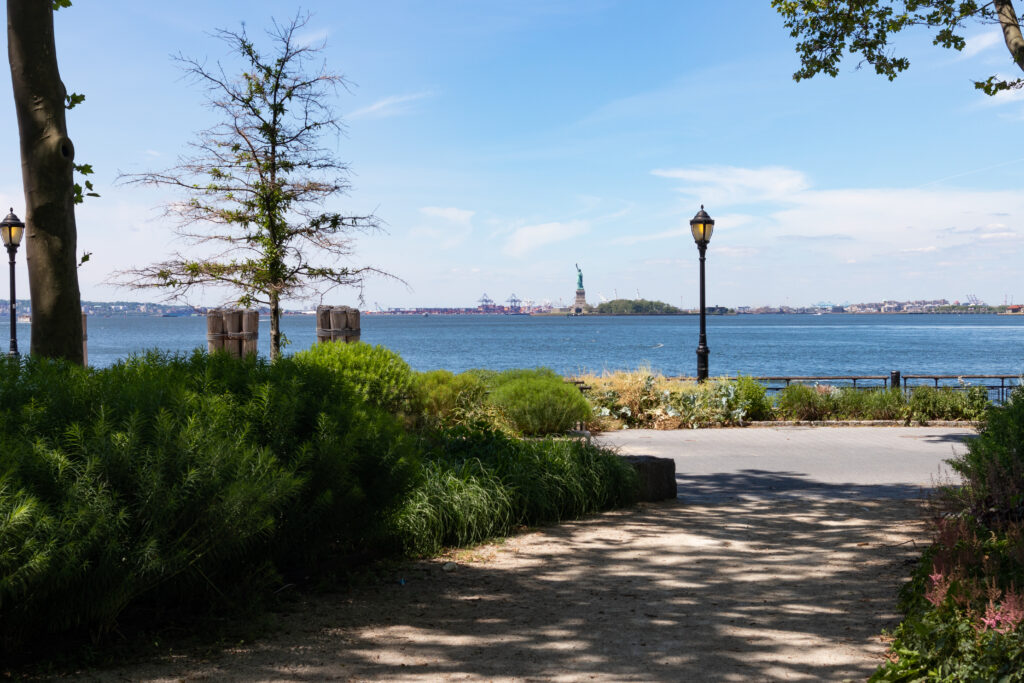
Located at the southernmost point of Manhattan, where New York City was born, Battery Park’s evolution has mirrored the history of the city itself. Its waterfront location made it a pivotal place for trade, conquest and defense, immigration, recreation, entertainment, transportation, and tourism for hundreds of years.
This ultimate guide to the Battery covers the fascinating history of Battery Park, including how it got its name, as well as a laundry list of the many things to see and do there. Sure, we New Yorkers love Central Park, but for park fun in Lower Manhattan, you can’t beat the Battery.
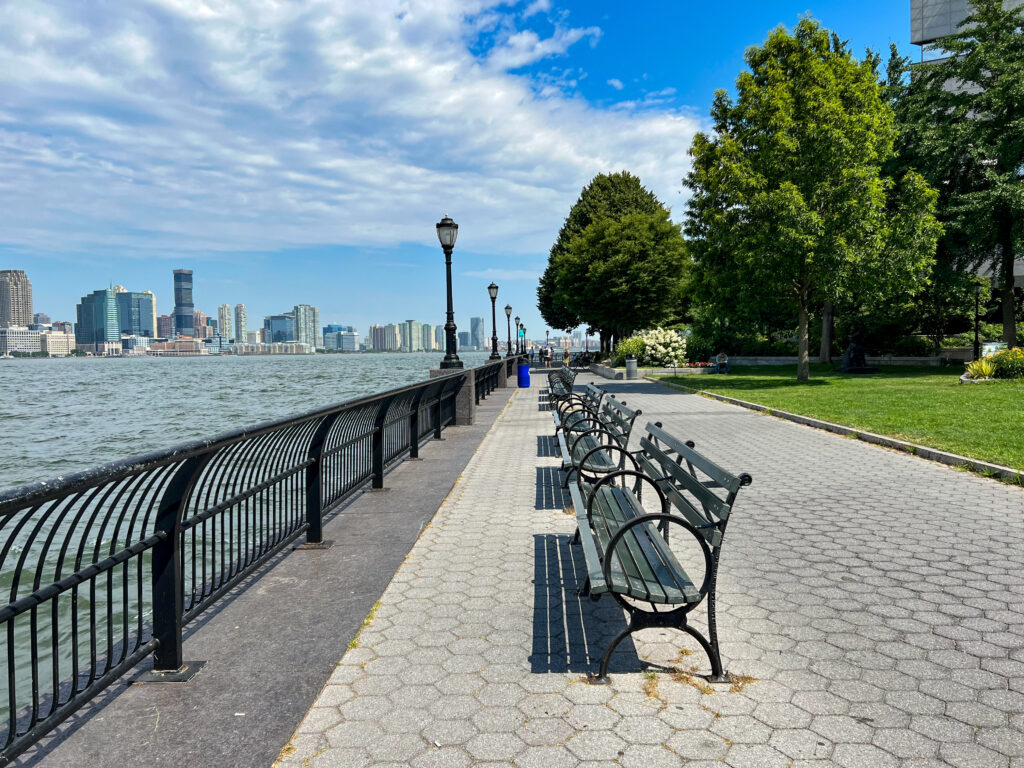
It’s both.
Often referred to as Battery Park by locals and visitors alike, the site’s official name became the Battery in 2015 — a return to its historical colonial moniker — as part of a decades-long (and still ongoing) effort to reinvent and revitalize the park and historic site while also protecting it for future generations against the effects of climate change.
The park today remains a very busy hub of recreation, tourism, and transportation, with thousands of people passing through the Battery every day. Many come and go on the Staten Island Ferry.
Visitors come to embark on our Statue of Liberty and Ellis Island Tour — you’ll find the starting point of the tour in front of historic Castle Clinton, located in the heart of the park. Children experience the thrills of the SeaGlass Carousel and other play areas. And many more people explore the tree-lined paths and numerous monuments.
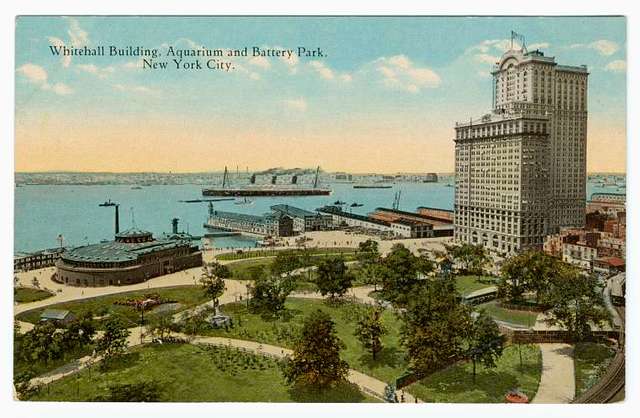
Before the Battery became what it is today, the area underwent many transformations. It started as water — the island of Manhattan actually ended at what is now the northern edge of the park.
But we’ll come back to this in a minute.
In the meantime, this is a very abbreviated version of the beats in Lower Manhattan’s history as it went from being the hunting and fishing grounds of the Lenape, the indigenous people of the area, and then a growing colony of European settlers.
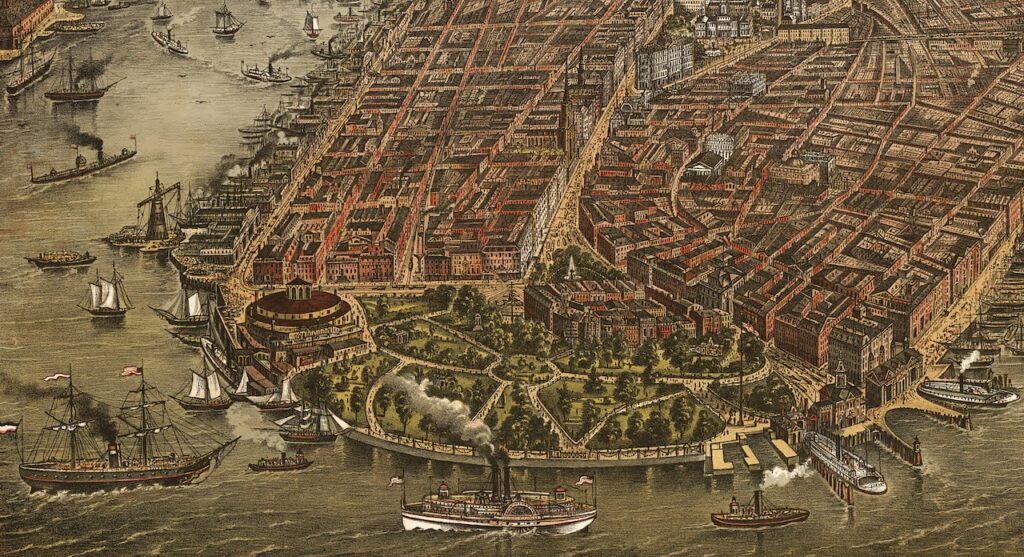
In 1626, the Dutch built Fort Amsterdam on the shores of their settlement of New Amsterdam as protection from attacks from the sea. This was the first of several iterations of a “battery” — an artillery encampment — that would inspire the name of the area going forward. Nearly four decades later, the English took over control of the colony (renaming it New York) and with it the fort.
More than a century after that, George Washington’s Continental Army occupied the fort during and after the Revolutionary War. Then in 1790, the fort was demolished and the area saw its first transformation into a public promenade.
In the early 1800s as tensions with England headed toward war again, the American military created an island about 300 feet offshore for a new fort to house more than two dozen cannons. This fort, called the West Battery, never saw any action during the War of 1812.
So why is Battery Park called Battery Park? Easy — it got its name from the artillery encampment housed there.
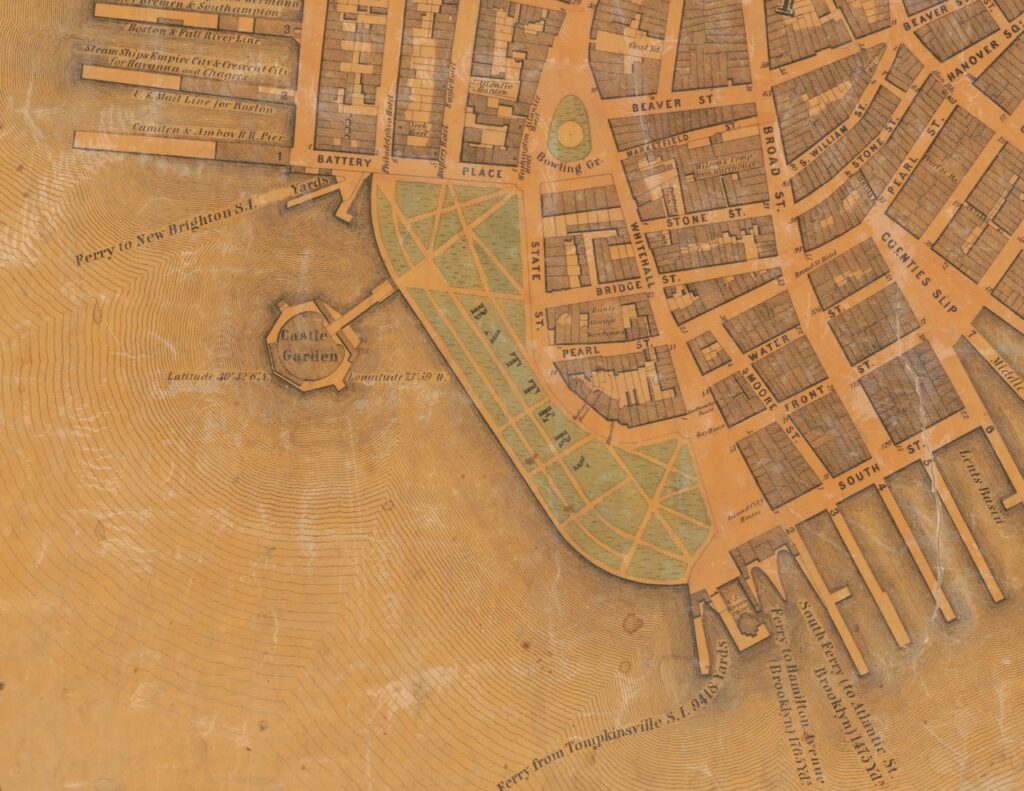
In the next few decades, the fort was renamed twice (Castle Clinton and then Castle Garden), decommissioned, leased to the local government, and transformed into a magnificent performance space. Finally in 1855, the waters around the castle were filled in, adding 25 acres to the tip of Manhattan. This is why Castle Clinton (it eventually reverted to that name) is simply part of the Battery and no longer an island.
In the latter half of the 19th century, the castle served as a processing office for about 8 million immigrants until Ellis Island was opened. Later, the building housed the New York Aquarium for more than 40 years.

Castle Clinton and the Battery underwent decades of decline. Demolition of the castle was only halted after Castle Clinton was declared a national monument. Even so, the area had seen better days. It had become forgotten, decayed, and damaged.
In 1986, architect Philip Winslow created a new master plan for Battery Park. Then in the 1990s and 2000s, the Battery underwent a slow but steady transformation guided by the Battery Conservancy, a public-private partnership, and funding from the city, the state, the federal government, and private donors. The entire promenade was rebuilt. The new seawall railing actually incorporated public art — a series of panels called “The River that Flows Two Ways” by artist Wopo Holup.
After Lower Manhattan, including the Battery, suffered catastrophic damage from Superstorm Sandy in 2012, parts of the park and infrastructure underwent repairs (including the rebuilding of a subway station). A long-term coastal resiliency project involving the park and nearby areas is still underway.
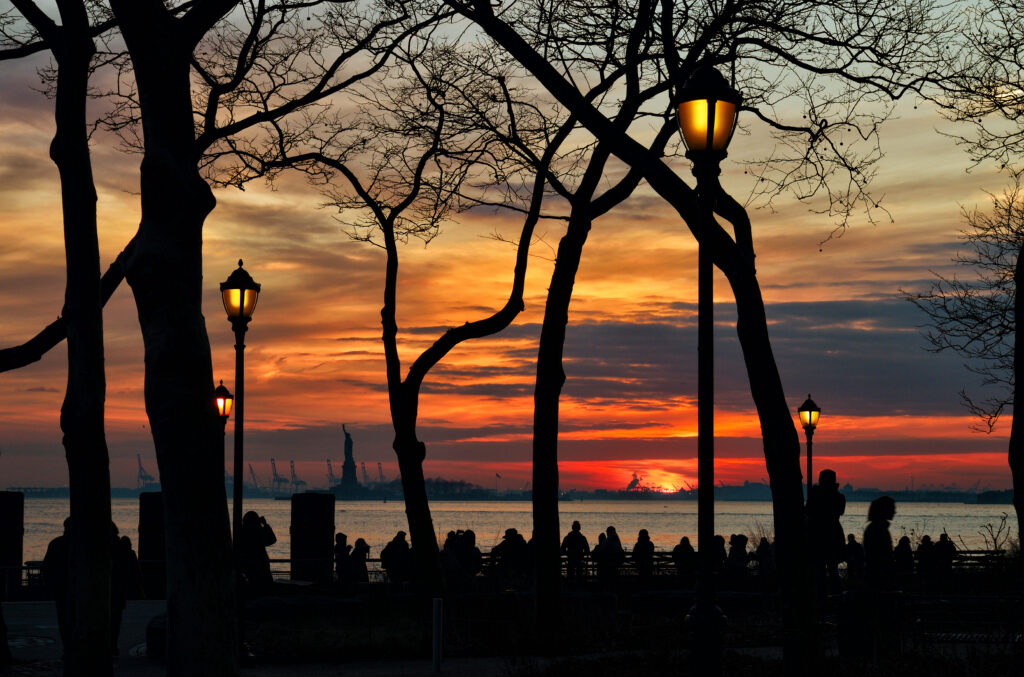
Despite the work still needing to be done, today’s Battery nonetheless is a beautifully reimagined public space offering so much to do.
Here are some ideas to get you started.
On a clear day, the waterfront promenade offers expansive vistas of Upper New York Bay, albeit from a distance, including the Statue of Liberty, Ellis Island, Governors Island, Jersey City, and more.
You can get much closer to Lady Liberty by booking one of our Statue of Liberty tours, which meets at Castle Clinton. Our tour guides do much more than recite facts — they expertly tell the stories of the challenges of the statue’s journey from France and its construction in New York Bay as well as the rich cultural history of immigration through Ellis Island.
Ours has been the best-rated Statue of Liberty tour on Tripadvisor for many years.
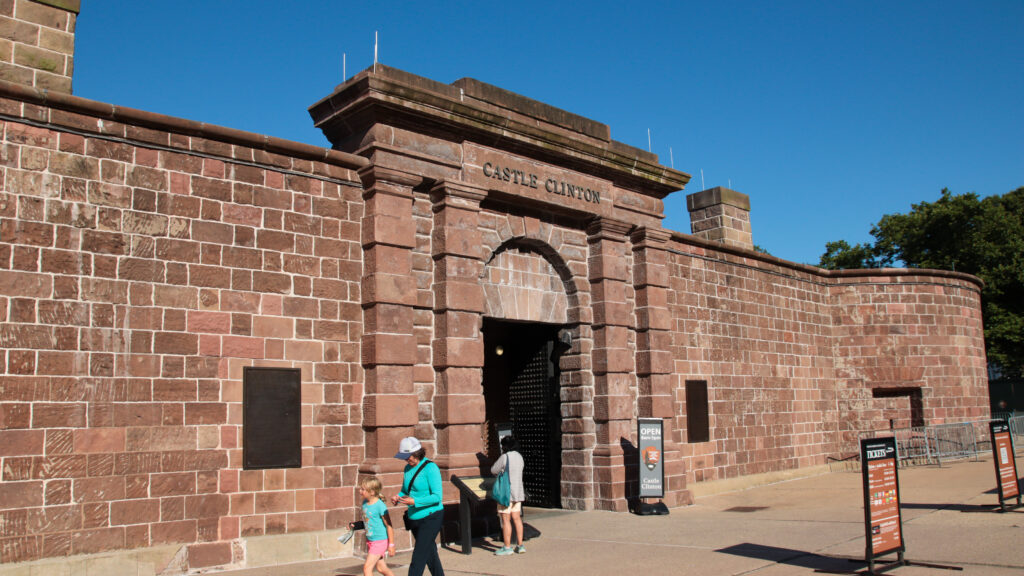
The National Park Service manages Castle Clinton National Monument, which has free exhibits and talks by park rangers. You can also browse the souvenirs at the gift shop.

Climb into one of the SeaGlass Carousel’s 30 stunning fish pods for this “immersive experience of movement, music, and light.” The ride’s theme is a nod to Castle Clinton’s past as New York’s first aquarium. Children find the ride delightful and many adults call it romantic.
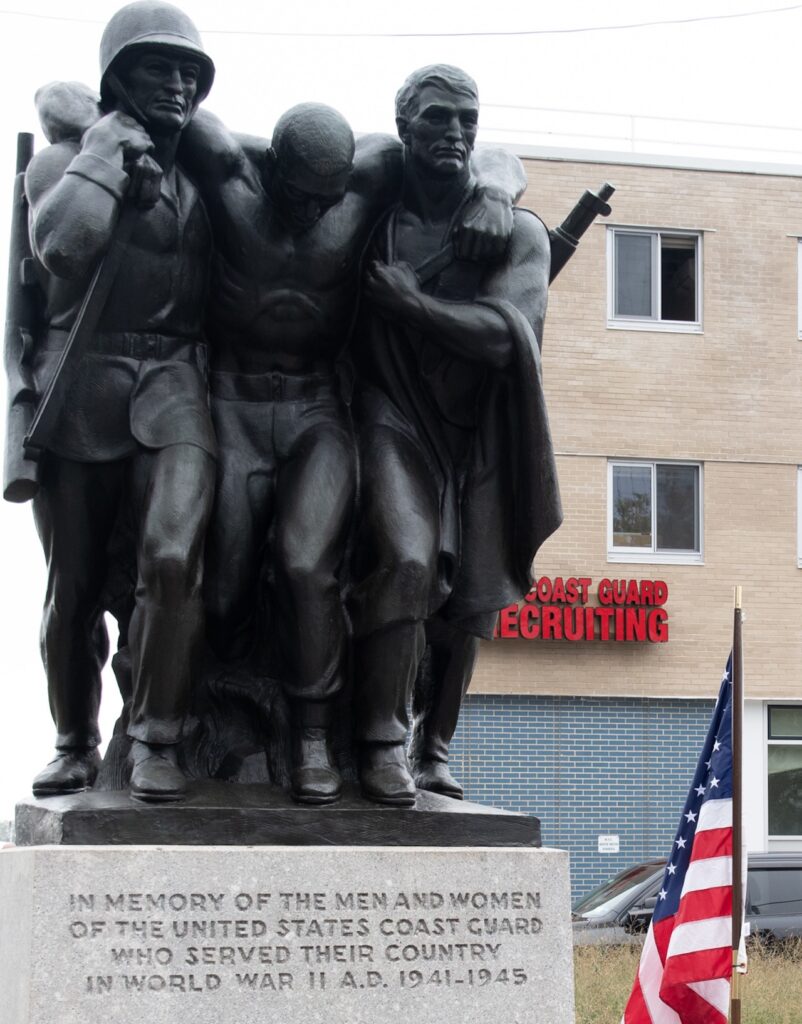
The Battery is home to more than 20 monuments commemorating significant events and historical figures. Here are some you shouldn’t miss:
The four-acre Battery Woodland features a beautiful lawn shaded by dozens of trees native to New York, including pin oaks, willow oaks, red oaks, sweet gum trees, and tulip trees. And the 240,000 square feet of the Gardens of the Battery offer a tranquil landscape of perennial greenery created by the renowned Dutch horticultural designer Piet Oudolf.
Right across State Street from the park is one of our favorite NYC museums that more people should know — the National Museum of the American Indian, a Smithsonian institution. Admission is always free.
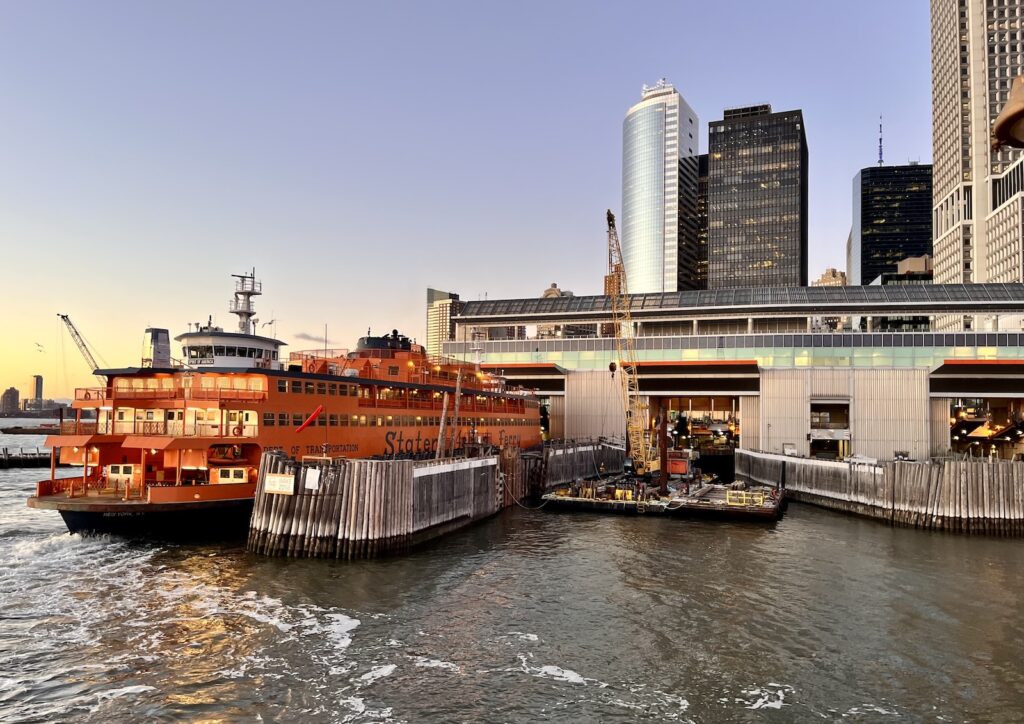
The Staten Island Ferry is one of New York’s best free things to do. While on the 25-minute ride across the harbor brings you to Staten Island, a borough of New York City, you can have a beer (sold on board!) and take in the views. The ferry operates out of Whitehall Terminal, which is part of the Battery area.
Several food kiosks, carts, and trucks set up shop in the Battery, offering everything from spicy kebabs to chocolatey Belgian waffles. But you can also dine and drink at The View at The Battery, a seasonal restaurant and special events venue.
Where is Battery Park? The Battery is the greenspace at the southwestern tip of Manhattan (in Lower Manhattan). It’s easy to reach via the metro, and it’s the launching point for visiting the Statue of Liberty and Ellis Island.
Yes, this list seems overwhelming. You don’t have to tackle it all in one day or even one trip. After all, the magic of New York is that it invites you to visit again and again for a lifetime of experiences and memories.
 10 Classic New York Hotels: From Luxury to Boutique
10 Classic New York Hotels: From Luxury to Boutique
Whether you book a suite in one of New York’s fanciest hotels alongside Central Park, a quirky room in an offbeat boutique property,…
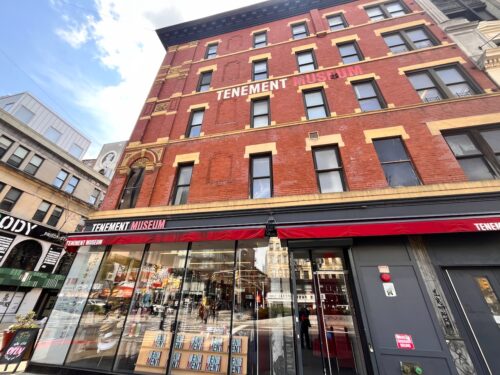 12 NYC Museums You Should Know
12 NYC Museums You Should Know
New York City is a world-renowned destination for many attractions, including its famous museums. You might have already heard about the Metropolitan Museum…
 Meet Our Tour Guides: Faces of New York
Meet Our Tour Guides: Faces of New York
When you’re exploring on one of our popular NYC tours, who’s leading the way? It’s a local who knows this city better than…